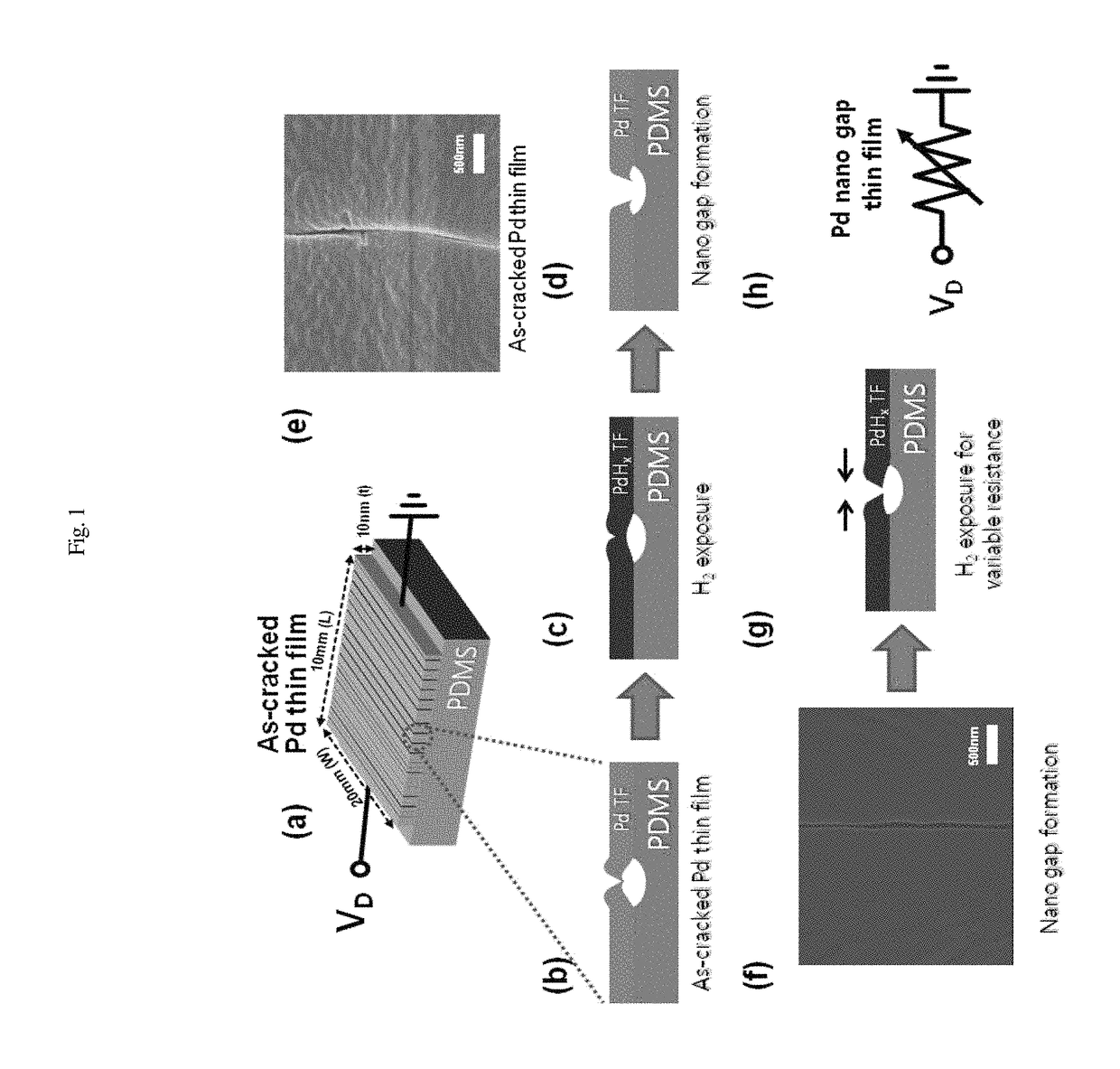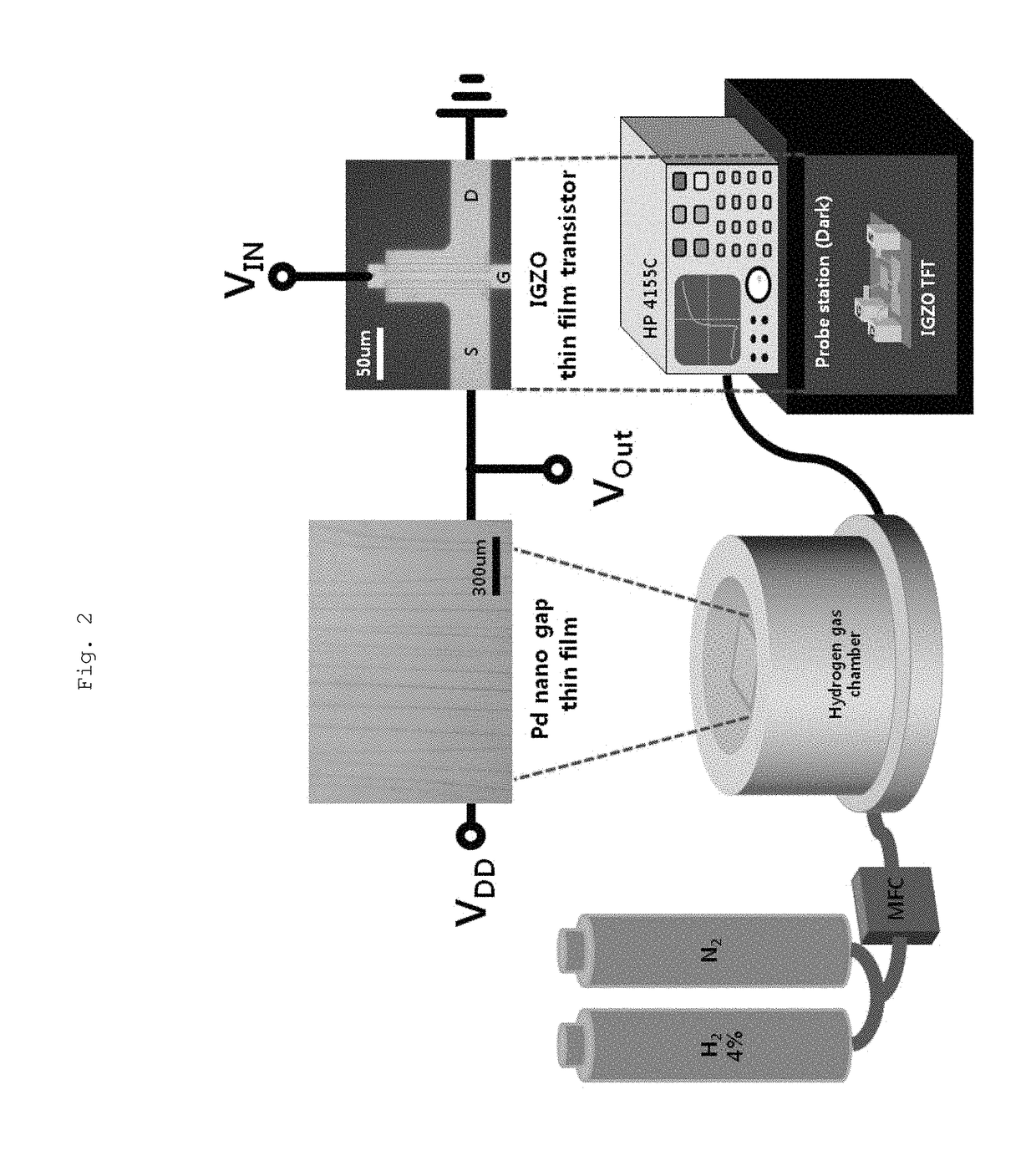Hydrogen sensor and sensor circuit
a sensor circuit and hydrogen sensor technology, applied in the field of hydrogen sensors, can solve the problems of difficult to widely apply hydrogen gas in our real life, high current signal of conventional hydrogen sensors, and high risk of explosion of hydrogen gas, and achieve the effect of reducing the concentration of hydrogen
- Summary
- Abstract
- Description
- Claims
- Application Information
AI Technical Summary
Benefits of technology
Problems solved by technology
Method used
Image
Examples
Embodiment Construction
[0028]Hereinbelow, preferred embodiments of the present invention will be described in detail with reference to the accompanying drawings. In the description, well-known technologies in the art will be omitted. Although such a description is omitted, persons skilled in the art, however, will appreciate characteristic features of the present invention when reading and understanding the following description.
[0029]As described in detail below, the present invention proposes a hydrogen sensor system in which the hydrogen sensing capability of a nanogap-based Pd sensor is improved by connecting the Pd sensor to an electrically stable amorphous InGaZnO thin-film transistor (a-IGZO TFT) in two different ways: Pd connection to the TFT source and to the gate. In one embodiment, the IGZO TFT is chosen, since it is stable enough to bear the gate bias stress during hydrogen detection; it would eventually be integrated with the present Pd sensor. As a result of the Pd connection to the TFT sour...
PUM
| Property | Measurement | Unit |
|---|---|---|
| width-to-length | aaaaa | aaaaa |
| thick | aaaaa | aaaaa |
| volume | aaaaa | aaaaa |
Abstract
Description
Claims
Application Information
 Login to View More
Login to View More - R&D
- Intellectual Property
- Life Sciences
- Materials
- Tech Scout
- Unparalleled Data Quality
- Higher Quality Content
- 60% Fewer Hallucinations
Browse by: Latest US Patents, China's latest patents, Technical Efficacy Thesaurus, Application Domain, Technology Topic, Popular Technical Reports.
© 2025 PatSnap. All rights reserved.Legal|Privacy policy|Modern Slavery Act Transparency Statement|Sitemap|About US| Contact US: help@patsnap.com



